Hydraulic lifting equipment plays an important role in bridge span installations by offering a precise, efficient, and controlled method of raising and positioning heavy bridge components. This equipment enables the gradual elevation of large spans to their desired height with exceptional accuracy, ensuring proper alignment and secure placement. The importance of hydraulic lifting equipment lies in its ability to handle the significant weight and complex geometry of bridge spans, providing a safer and more efficient alternative to traditional methods. With its ability to deliver high precision, it ensures a smoother installation process while minimizing risks and delays.
Hydraulic lifting equipments applications include:
- Bridge Span Lifting
- Launching Prefabricated Bridge Spans
- Span Placement in Complex Locations
- Lifting & Removing Existing Spans For Repairs
- Adjustments and Alignment Of Bridge Spans
Components of a hydraulic lifting equipments
- Hydraulic Cylinders: Convert hydraulic pressure into motion for lifting.
- Hydraulic Pump: Generates high-pressure hydraulic fluid.
- Hydraulic Fluid: Transmits force and lubricates the system.
- Control Valves: Regulate fluid flow and pressure.
- Hoses and Fittings: Connect components and carry hydraulic fluid.
- Pressure Relief Valve: Prevents excess pressure.
- Accumulator: Stores energy for smooth operation.
- Pump Drive Motor: Powers the hydraulic pump.
- Lifting Platforms: Stabilize the load during lifting.
How does hydraulic lifting equipment work?
- Pump: Pressurizes hydraulic fluid from a reservoir.
- Fluid Flow: Sends fluid through control valves to cylinders.
- Cylinders: Fluid enters cylinders, moving the piston to generate lifting force.
- Control Valves: Regulate fluid flow for precise lifting or lowering.
- Lifting: Fluid pushes the piston to lift the load.
- Lowering: Fluid flow is reversed to lower the load.
Advantages if hydraulic lifting equipments
- Capable of lifting heavy loads efficiently.
- Allows for accurate lifting and lowering.
- Equipped with safety features like pressure relief valves.
- Speeds up lifting processes for time savings.
- Suitable for various heavy lifting applications.
- Requires minimal space for operation.
- Ensures stable and controlled movement.
- Operates with lower power consumption.
- Reduces the need for human effort.
- Built to withstand tough working conditions.
- Customizable to fit project-specific needs.
- Provides controlled lifts to prevent structural damage.
- Easily integrates with other machinery for complex operations
Types of Hydraulic Lifting Equipment and Tools used for Bridge Span Installations
Jack and Slide Equipment: This equipment utilizes hydraulic jacks to lift the bridge span vertically, while it is moved horizontally across rollers or sliding supports. It is frequently used for shorter bridge spans or in situations where gradual, controlled movement of the bridge is required. Multiple synchronized jacks can be employed, allowing precise control during both lifting and horizontal displacement, ensuring the load is lifted safely and the equipment maintains stability during the shift.
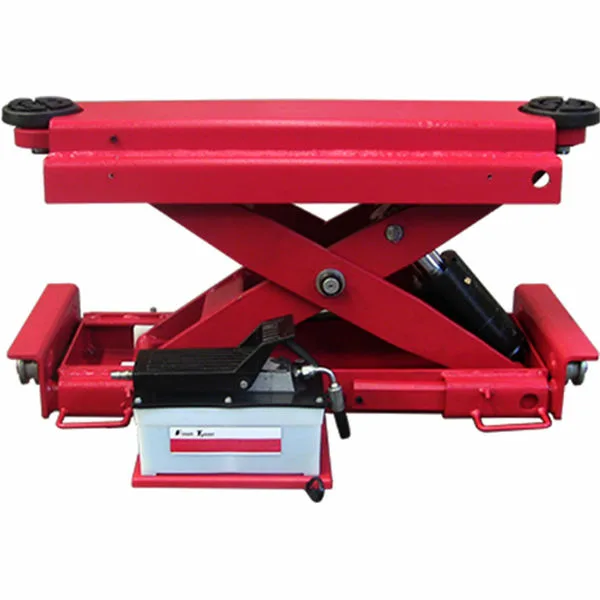
Hydraulic Gantries: Hydraulic gantries are versatile lifting devices that incorporate a frame equipped with several hydraulic cylinders. These gantries can lift the bridge span vertically using hydraulic force, and then move the span horizontally once it has been raised. This equipment is ideal for heavy or large bridge spans because it offers both vertical and horizontal movement within a single operation. The mobility of the gantry makes it easy to reposition during different phases of installation, and it is particularly useful when installation sites have space constraints or are difficult to access.
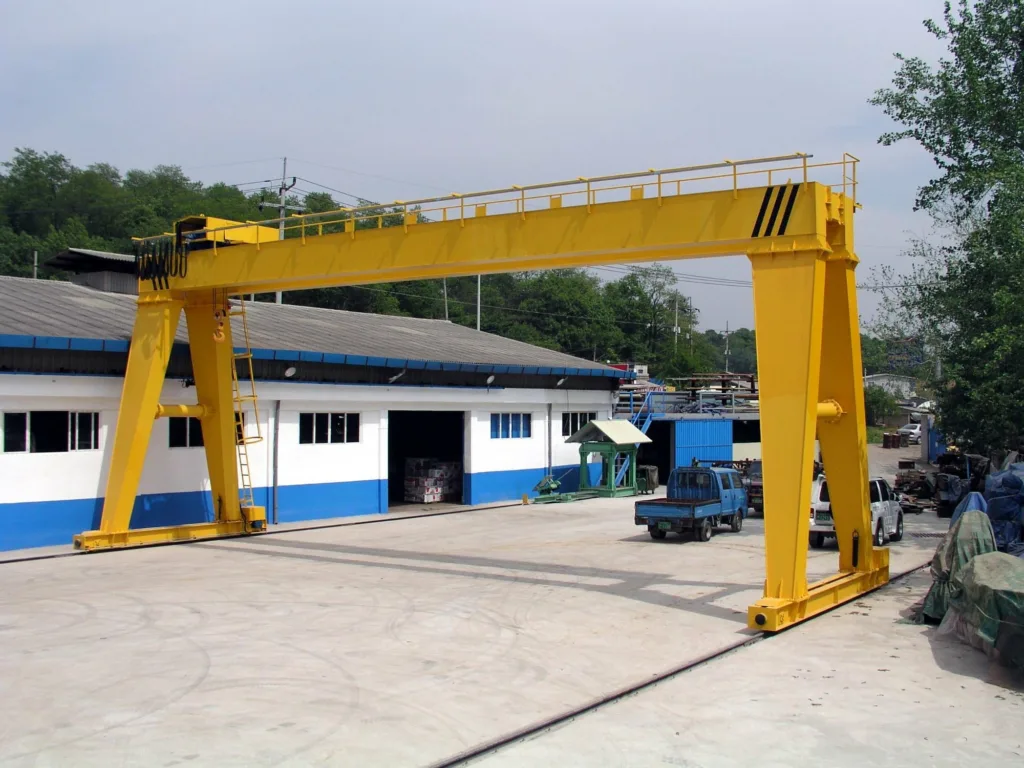
Self-Propelled Modular Transporters (SPMTs): SPMTs are specialized transport vehicles equipped with hydraulic motors and lifting capabilities that allow them to lift and move bridge spans both vertically and horizontally. The system is fitted with multiple hydraulic cylinders, enabling it to adjust its height and positioning with great precision. This equipment is ideal for moving large bridge spans over long distances, especially in areas where the terrain may vary. The mobility and flexibility of SPMTs make them a preferred choice when multiple heavy loads must be transported and positioned with high precision.
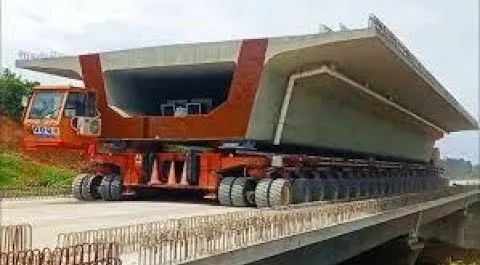
Hydraulic Lifting Platforms: These platforms are stationary systems used to lift bridge spans to the required height during installation. Hydraulic cylinders are deployed to lift the platform, which in turn raises the bridge span. Once the span is in position, it can be moved into place using cranes or other equipment. Hydraulic lifting platforms are highly effective when precise, vertical lifting is needed in confined spaces, where traditional cranes may not have sufficient reach or maneuverability. Their high precision makes them an excellent choice for controlled, delicate lifting tasks.
Rotary Hydraulic Lift Equipment: Rotary hydraulic lift systems use hydraulic pressure to power rotary hydraulic cylinders, which lift and rotate the bridge span into position. This equipment is particularly effective when the span needs to be rotated as part of the installation process, such as when installing curved or irregularly shaped spans. The hydraulic pressure allows for precise control over the angle and position of the span, making it ideal for maneuvering bridge components around obstacles or when they need to be installed at an angle that cannot be achieved with traditional lifting equipment.
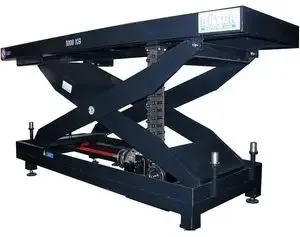
Tandem Hydraulic Jacks: Tandem hydraulic jacks work in coordination to lift large or unevenly weighted bridge spans. Several hydraulic jacks are employed simultaneously, with each one operating in harmony to ensure that the load is evenly lifted. This equipment is especially useful for large spans or those with uneven weight distribution, as it helps prevent tipping or tilting during the lifting process. The precision and synchronization offered by tandem hydraulic jacks make them an essential tool for high-stakes, large-scale bridge installation projects.

Hydraulic Strand Jacks: Hydraulic strand jacks are powerful lifting devices that use high-tensile steel strands to lift exceptionally heavy loads. The hydraulic pressure is applied to tension the steel strands, which in turn raises the load vertically. This method is particularly suitable for heavy or large bridge spans, as the strand jacks offer superior lifting power and precision. Hydraulic strand jacks are versatile, capable of lifting vertically and also moving the span horizontally once in position, making them an ideal choice for complex bridge installations, especially in challenging conditions where traditional lifting methods might fall short.
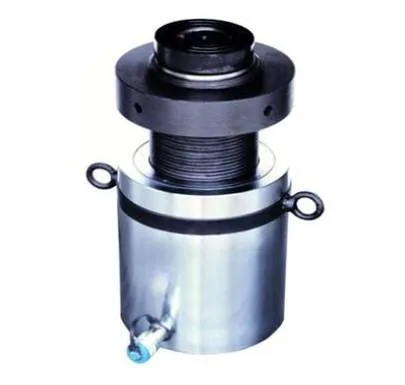
Synchronized Lifting Equipment: Synchronized lifting equipment incorporates multiple hydraulic cylinders that are carefully coordinated to lift a bridge span evenly. This equipment ensures that the load is raised symmetrically, preventing distortion or damage during the process. Each hydraulic cylinder’s movement is controlled by an integrated system, which synchronizes their operation, resulting in precise, uniform lifting. This equipment is especially valuable for large and complex bridge spans where uniform lifting is essential to maintain the integrity of the load and ensure precise positioning.
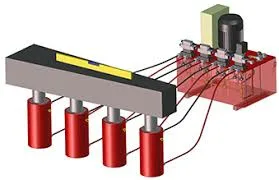
How to select the right hydraulic lifting equipment for bridge span installation?
- Ensure the system supports the weight of the bridge span.
- Match the system’s lifting height and stroke to project requirements.
- Consider how quickly the system can operate based on project needs.
- Check if the system fits within the available space at the site.
- Decide if a mobile or fixed system is needed for the project.
- Look for built-in safety mechanisms like pressure relief and overload protection.
- Consider both initial costs and long-term operational costs.
Conclusion
Hydraulic lifting equipments are important for handling heavy loads with precision and efficiency. They are essential in applications like bridge span installations and large-scale construction, offering reliable, safe, and cost-effective solutions. With advancing technology, these systems continue to evolve, making them indispensable for modern infrastructure development.



